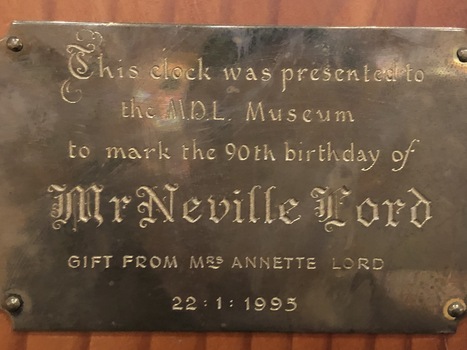Historical information
The invention of the pendulum clock in the 17th century marked a significant milestone in the evolution of wall clocks. The pendulum clock was more precise and dependable than previous clock designs, and it became the standard for timekeeping for many years. In the 19th century, the production of wall clocks became more industrialized, and they were mass-produced for the first time. This made wall clocks more affordable and accessible to the general public, allowing more people to have access to accurate timekeeping devices in their homes and businesses.The brass plaque notes - 'This clock was presented to the MDL Museum to mark the 90th birthday of Mr. Neville Lord Gift from Mrs Annette Lord 22:1:1995'.
Physical description
A brown wooden wall clock with a white round clock face, with roman numerals, and a brass pendulum enclosed in a glass faced compartment. It has a brass presentation plaque below the clock, on the wooden pole.
Inscriptions & markings
'Gerber' 'Quartz' is printed on the clock face. 'Regulator' is printed in gold lettering on the glass encasing the pendulum. On the brass plaque is written - 'This clock was presented to the MDL Museum to mark the 90th birthday of Mr. Neville Lord Gift from Mrs Annette Lord 22:1:1995'.




